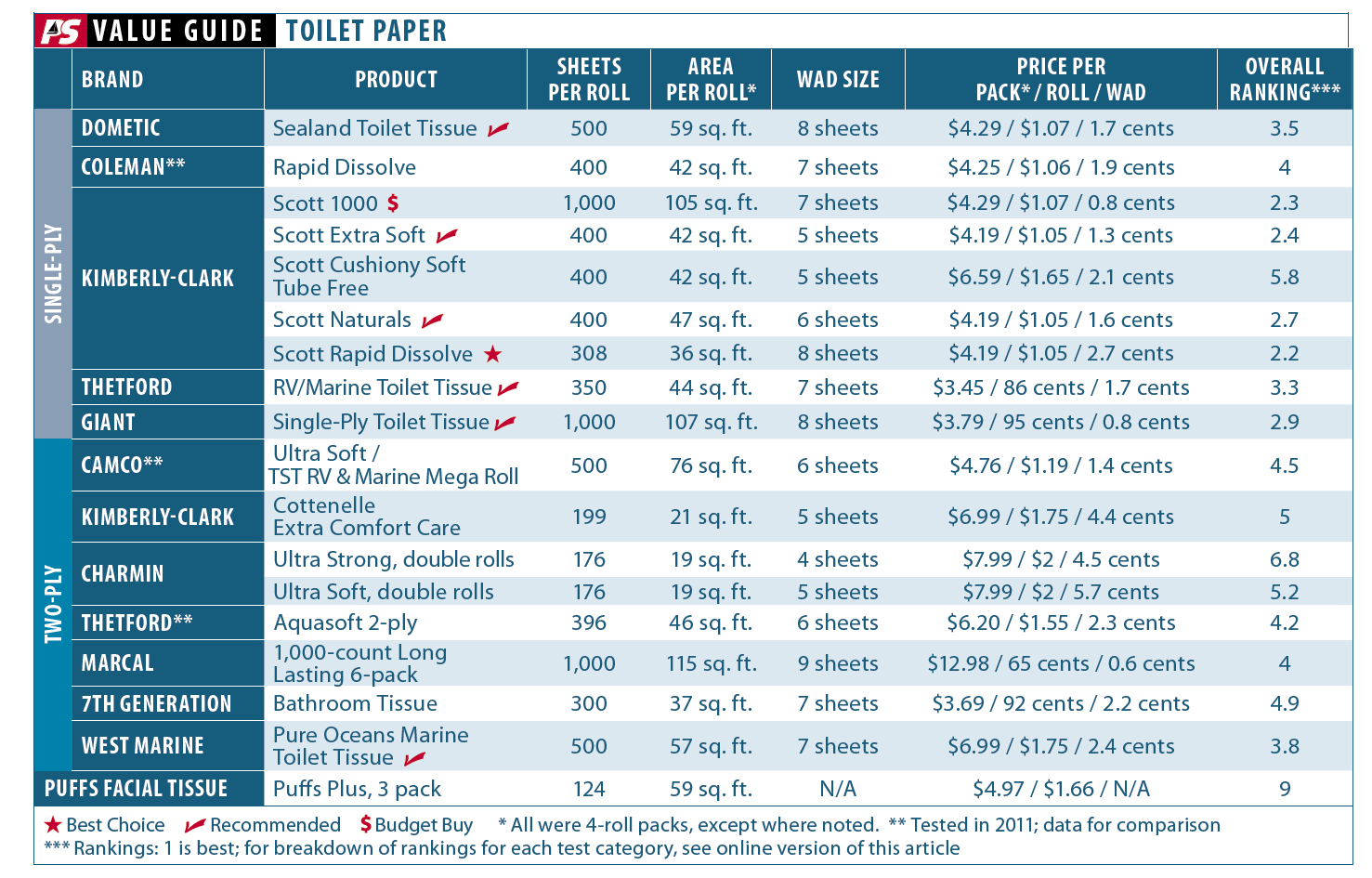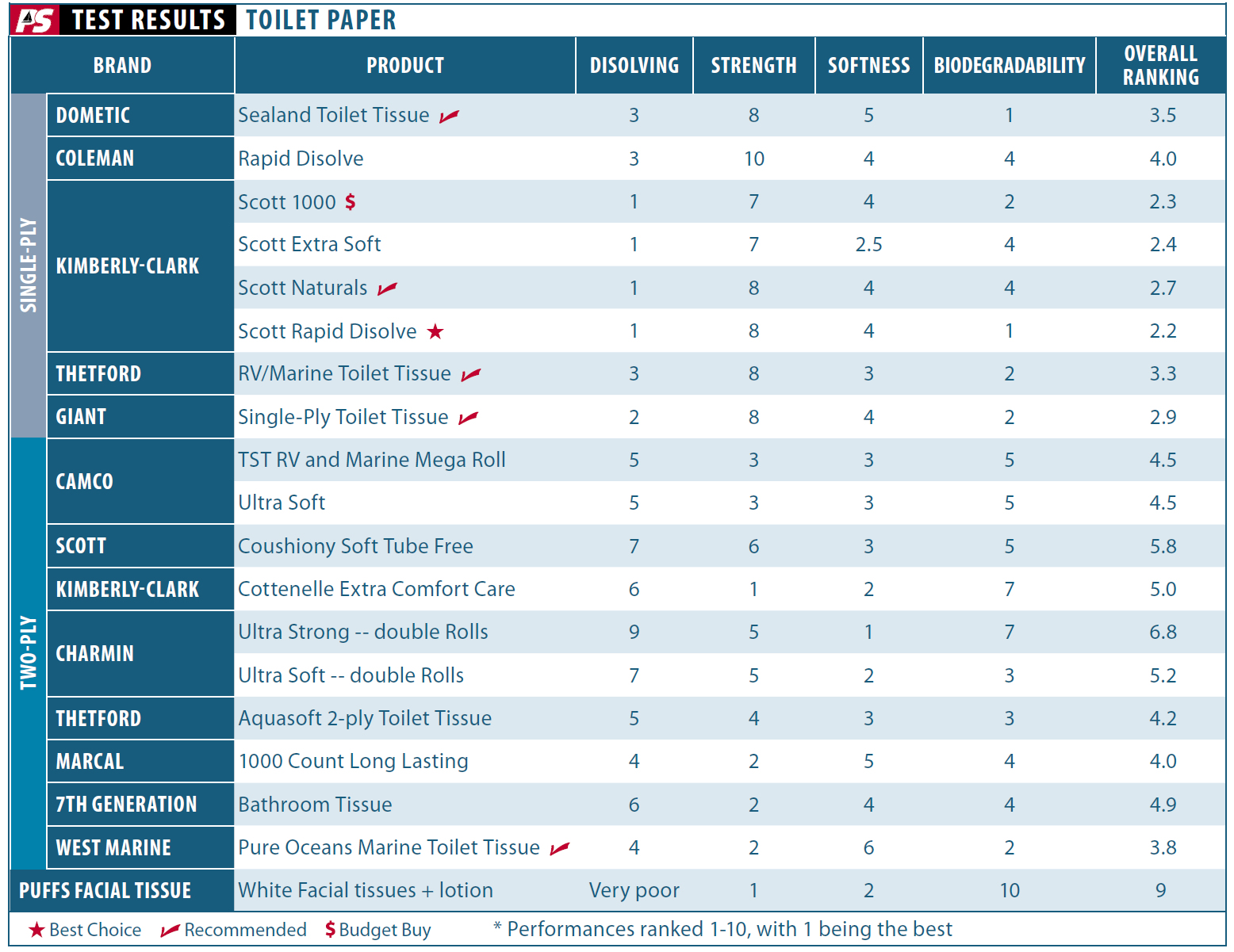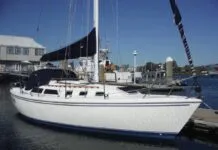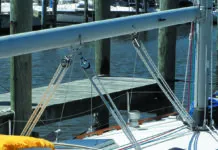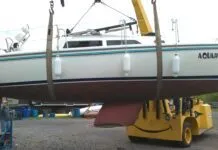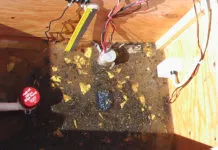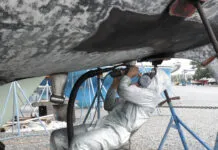When testers dismantled Practical Sailors test holding tanks-the site of years of experiments with holding-tank chemicals, sanitation hoses, and vent filters-we hoped that it was the last hands-on contact wed have with marine sanitation systems for a long time. And then a friend came to us seeking advice on curing his regularly clogged head. He had checked the obvious culprits-scale buildup in the hoses, blocked vent, etc.-and found everything in proper order.
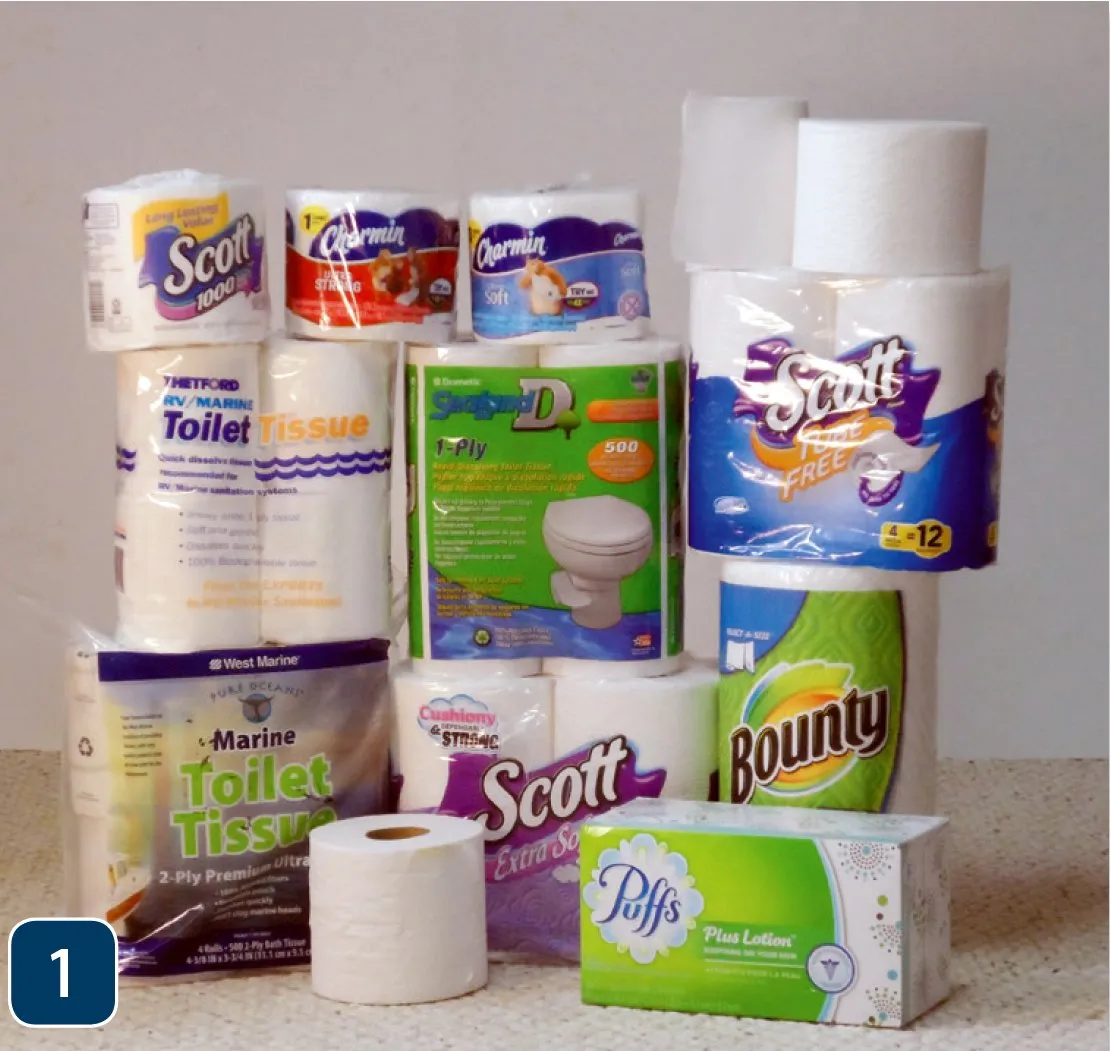
As it turned out, his wife thought there should be a box of facial tissues in the head, and some un-named crewmember was depositing them in the toilet. While most toilet paper will gradually soften-the answer to most clogs is adding some water and waiting 15 minutes-facial tissue does not, and the blockage had hardened over time.
By code, home plumbing is 4 inches in diameter and can swallow an awful lot, but marine plumbing is only 1.5 inches in diameter and shrinks to 1-inch wide through the joker valve and bends. In defense of this diminutive piping, we decided to update our June 2011 review of marine toilet paper.
The standard advice is to test any candidate onboard toilet paper by soaking a few squares in a shallow bowl of water, swirling it a bit, and confirming that it falls to pulp with little effort. We thought wed dig a little deeper.

What We Tested
In June 2011, Practical Sailor evaluated marine and RV toilet papers, identifying a few top toilet papers and a few home products that just don’t work. For this test, we broadened our focus to include facial tissues, as well as more non-marine products readily found in grocery stores. We tested single-ply toilet paper, double-ply toilet paper, and facial tissues. We dropped paper towels from the report because of their poor performance.
Tested brands included Dometic, Coleman, Scott (Kimberly-Clark), Thetford, Giant, Camco, Charmin, Marcal, Seventh Generation, West Marine, and Proctor & Gamble (Puffs and Charmin).
Scott Naturals and West Marine Pure Oceans two-ply both feature recycled content. Also, Scott Naturals and Scott Cushiony Soft come without a cardboard tube. Its unclear whether this actually reduces waste since the tube is recyclable, but the paper was made heavier to compensate and the tube-free design is a battle on some dispensers.
How We Tested
For this round of testing, we used the same protocol as the 2011 evaluation, with a few changes. Instead of using a sample size of four sheets of toilet paper, as we did in 2011, testers used a sample that better represented the wad most people use. We crumbled up comparable wads of each product (an amount that would be sufficient for getting the job done), then counted the number of sheets in each wad for comparison.
The dissolving speed of the products was tested by placing a sample in a jar of lukewarm water, stirring it for five seconds, allowing it to soak for five minutes, and then stirring again for five seconds. The products were graded on how well they dissolved. If a sample did not break down well, we repeated the process until it dissolved sufficiently.
We also added biodegradability to our test protocol. (More than once, we have seen tell-tale bits of paper marching along the sand or packed into cracks in the rock as we dived on an anchor or snorkeled a reef.) Since some waste will rest in the holding tank and be pumped to the local sewage treatment works, and some will be pumped directly overboard, we tested biodegradability in two ways. We laid samples on a weather-protected compost pile (very controlled conditions) for one-month and noted signs of the papers deterioration. We also left samples in Chesapeake Bay water for three weeks, letting the native bugs slowly do their work.
All of the test products were strong enough to use, but for comparison, we put each through a strength test. Testers clipped a small length of chain to the end of a sheet of each toilet paper, then lifted the paper until it tore. Strength was computed, and the test was repeated three times for each product.
In determining final ratings, testers prioritized dissolvability, followed by (in order of importance) softness, biodegradability, and strength. Some products listed in the Value Guide were tested in 2011, not this go-round, but we included the data for comparison.
Observations
All single-plies we tested performed acceptably. It was difficult to distinguish performance among them; most fell apart in the first stir, and those that hesitated turned to pulp after five minutes. Two-plies, on the other hand, tended to remain as a large clump during the initial stir, suggesting they would present a problem for joker valves. Two-plies do fall apart after five minutes, but some required considerable stirring, suggesting they may layer in a holding tank, creating a lingering problem.
The standout in the two-ply group was West Marine Pure Oceans, which behaved more like a slow-dissolve single ply. It was the only product in the two-ply group that we would consider safe for some marine sanitation systems.
Septic-safe does not mean holding-tank safe. While septic-safe toilet paper will degrade over time, don’t expect dissolution to happen quickly or easily, and certainly not before the paper has consolidated in the holding tank. We used Cottenelles septic-safe, two-ply tissue for a two-week cruise and fought head clogs constantly, even after switching to a good single-ply. Charmin products were the slowest to dissolve.
Facial tissues were a disaster. Yes, they are strong and soft, but even after hours of soaking, they refused to dissolve. In the seawater test, facial tissues remained intact for weeks.
For the seawater test, we fully expected the flimsiest single-plies to dissolve in short order, but they didnt. In fact, after four weeks of soaking in quiescent seawater, none of the toilet paper samples looked any different from the day we put them in the jars. The clear lesson is that in the absence of a modest flushing tide, whatever you pump into in the water will remain intact for quite some time.
The compost heap test was more akin to what happens in a holding tank. Within two weeks, the best tissues fell to holes, liquefying before our eyes. This also showed that thin single-plies wet through far more rapidly than others, which relates directly to how much is required to get the job done.
At the end of the compost-pile test, all of the quick-dissolve toilet papers were rapidly developing holes and would have vanished within a month. With the exception of Pure Oceans, the two-plies degraded much more slowly.
Recycled toilet paper, as a group, was not impressive. The texture was rough, and the dissolving rate was generally not acceptable. Scott Naturals was the only recycled product that testers found to be acceptable; it features a blend of recycled fiber and soft, virgin fiber.
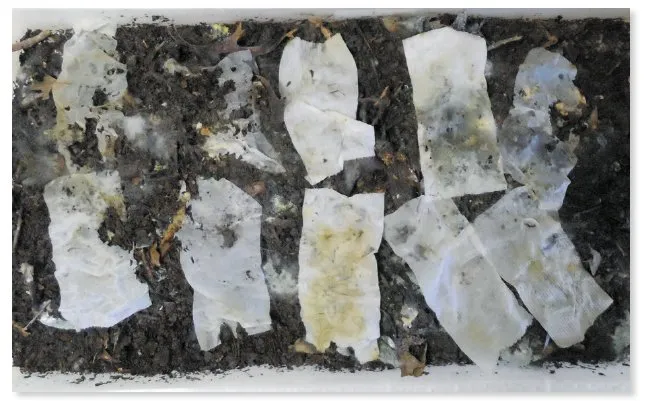
Single Plies
Scott Rapid Dissolve
The defending PS test champion, Scotts Rapid Dissolve retained its status and set the benchmark by disintegrating into nothingness with the slightest mixing. A basic, no frills product, Rapid Dissolve is the best bet to avoid plumbing troubles.
Bottom line: Rapid Dissolve is again the Best Choice toilet paper for marine heads.
Scott Extra Soft
A little texturing made Scott Extra Soft feel like a two-ply, without sacrificing ease of dissolving. Fewer sheets are required to get the job done than with more basic products, making it the strong user-favorite single-ply.
Bottom line: The combined virtues of user friendliness, quick dissolution, and reduced usage earn Extra Soft a strong Recommendation.
Scott Cushiony Tube-Free
In order to compensate for the missing cardboard tube, the maker strengthened the Scott Cushiony paper. This made it the slowest dissolving of the single-plies.
Bottom line: They should have left the tube in.
Scott 1000 Count
Scott 1000 featured thin sheets, no quilting, average texture, and a big roll. It degraded and dissolved very quickly.
Bottom line: This is the PS Budget Buy pick, but the thin paper wont be very popular with the crew.
Scott Naturals Tube-free
Scott Naturals offers minimal quilting and average texture, but it dissolved fast. It contains 40-percent recycled fiber.
Bottom line: Recommended, based on good performance and sustainability.
Giant Single-ply
The Giant Single-ply toilet paper finished in the top group, suggesting that cheap, private-label single-plies are probably safe to use in marine heads.
Bottom line: We Recommend Giant and other store-brand single-plies.
Thetford RV/Marine toilet paper
Thetfords RV/Marine toilet paper was softer than some other single-plies, but it was not the quickest to dissolve. It tied the Dometic toilet paper as the fastest to biodegrade.
Bottom line: Recommended.
Dometic Sealand Marine toilet paper
Amazingly fast to biodegrade, Dometics Sealand tissue led the pack in this area, falling into pieces within five days. The tissue is quick to dissolve and reasonably soft. Testers have used it onboard for years without trouble.
Bottom line: Recommended.
Two Plies
With the exception of Pure Oceans Marine Toilet Tissue, all of the two-ply products were much slower to break down than the single-plies, so we wouldnt recommend any other two-ply for use with marine heads. All required soaking, and without stirring, they would take hours to dissolve.
Pure Oceans is not a true two-ply, but rather a pair of single plies rolled together, without the extensive quilting and bonding found in other two-plies. Unfortunately, it is not particularly soft either, perhaps a consequence of the high recycled-fiber content. We would Recommend it only for use with a robust head and pump-out arrangement-more robust than a Jabsco Compact, for example.
Camcos RV & Marine TST (same product as its Ultra Soft) was one of the strongest papers in our test, but it was surprisingly slow to dissolve. Because of its potential for head clogs, we cannot Recommend it. Other two-plies we would avoid using in a marine head include Thetfords Aquasoft; Charmin Ultra Soft and Ultra Strong; Marcals 1,000 Count Long-lasting; Seventh Generation; and Cottenelle Ultra Comfort Care.
Facial Tissue
We included Puffs Plus facial tissue solely because it has been implicated in serious head clogging. In the dissolving test, it softened but did not break down-no matter how long it was soaked. Only with repeated and vigorous stirring were we able to tear it a bit, but nothing that implied it could easily be pumped out of a holding tank.
Bottom line: Keep facial tissues out of the head compartment.
Conclusions
Even with single-plies, seawater degradation was slow. This highlights the need to never pump overboard near shore; if you must, use a macerator and not just a diaphragm pump.
The clear loser was facial tissue. Its biodegradability performances left little doubt that it would remain intact underwater for months and cause clogs.
Testers were reasonably happy with all of the single-plies we tested, with the Scott Rapid Dissolve leading the pack. However, rapid dissolving is not the only thing that counts, and Scott Extra Softs greater user-friendliness make it a winning substitute for a more cushy two-ply. Single plies are typically flimsier than double plies, but this can be compensated for by using slightly more single-ply sheets per wad, which is still usually less paper (by weight) than a double ply. More importantly, the single ply is less likely to clog.
Except for the marine toilet papers, two-plies are an unacceptable risk of head clogs. They were much slower to break down, most critically during the initial stir when they would be passing through the joker valve. If they fail to break up during pumping, you can be sure they will be trouble at the pump-out.
